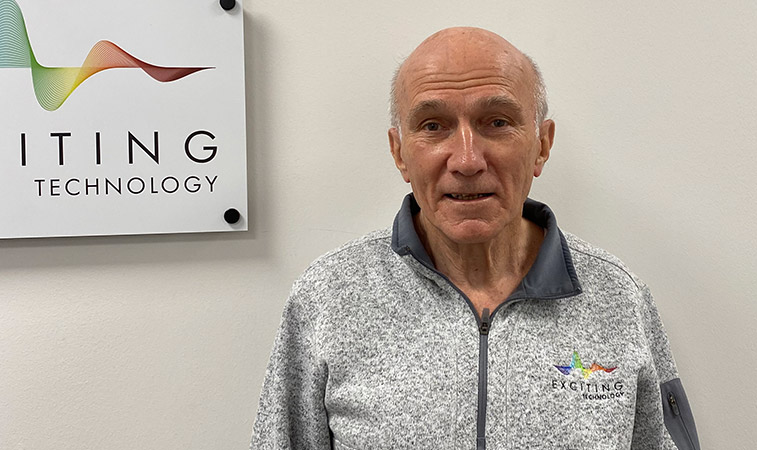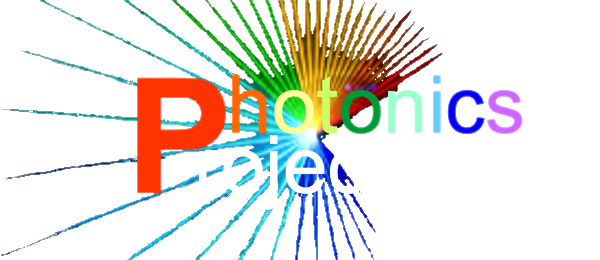Photonics Project Interview with Paul McManamon
Dr. Paul F. McManamon is Technical Director of the Lidar and Optical Communications Institute, LOCI, at the University of Dayton. He is also president of Exciting Technology LLC, and chief Technical officer at Nuview. He was chief scientist of LyteLoop, an innovative start-up company for about 6 years, until July of 2021. He retired from being Chief Scientist for the Air Force Research Lab, AFRL, Sensors Directorate in 2008. He chaired the US National Academy of Sciences Study “Laser Radar: Progress and Opportunities in Active Electro-Optical Sensing” (2014). He was the main LiDAR expert witness for Uber in the lawsuit vs Google/Waymo. He was co-chair of the US NAS study “Optics and Photonics, Essential Technologies for Our Nation” (2012) study, which recommended a National Photonics Initiative, NPI. Dr McManamon was also vice chair of the 2010 NAS study called “Seeing Photons: Progress and Limits of Visible and Infrared Sensor Arrays”. He has written two books on Lidar. Dr McManamon is a Fellow of SPIE (the International Society for Optics and Photonics), IEEE (the Institute of Electrical and Electronic Engineers), OSA (the Optical Society of America), AFRL (Air Force Research Laboratory), DEPs (the Directed Energy Professional society), MSS (the Military Sensing Symposia), and AIAA (the American Institute of Aeronautics and Astronautics). Dr McManamon received the WRG Baker award from the IEEE in 1998 for the best paper in ANY refereed IEEE journal or publication (> 20,000 papers). He was president of SPIE in 2006. He was on the SPIE board of directors for 7 years and on the SPIE Executive Committee from 2003 through 2007. Dr McManamon worked with Dr. Fenner Milton and Dr. Gerry Trunk to found the Military Sensing Symposia, combining IRIS and tri-service radar. He worked as a civilian employee of the Air Force at WPAFB from May, 1968- May, 2008. His last job for the Air Force was chief scientist for the AFRL Sensors Directorate, where he was responsible for the technical aspects of all AFRL sensing technologies, including RF and EO sensing, automatic object recognition, IRCM, electronic warfare, and device technologies. Prior to that, he also was senior scientist for EO/IR Sensors, and acting chief scientist for the Avionics directorate for > 2.5 years. In 2006 he received the Meritorious Presidential Rank Award. He was the co-recipient of the SPIE Presidents’ Award in 2013.

Photonics Project: Paul, glad you could make it – seems like you’ve been keeping very busy with your various projects and initiatives. What are some of your key activities now?
Paul: Well between Exciting Technologies and the University of Dayton and LOCI there is definitely a lot going on. Some of the most interesting include Laser Vibrometery over large distances, 3D Lidar Mapping from Space using a constellation of satellites, and a project for Laser Communications through free space with auto-steering optics. Those are all with Exciting Technologies.
On the UD/LOCI side we also have some great stuff going on including more Lidar work utilizing a Voxtel 128×128 array, as well as some of their linear column detectors up to 512 in length. This is a collaboration with Prof. Sanjay Krishna’s lab at Ohio State University. Then there is a crystal growth initiative with G&H (formerly Cleveland Crystals some time back) for Modulators in the 100GHz range. We are looking at some alternatives to Lithium Niobate for these applications and they are the transition partner for the materials as they are developed. Some of this work is funded through the Ohio Federal Research Network.
Photonics Project: Wow, that is definitely a lot of great work. Very impressive both from a technical depth and breadth standpoint. I understand you will be headed to SPIE DCS as well? And your most recent book will be honored?
Paul: Yes, I was fortunate to receive the Goodman Book Writing Award from SPIE. I will accept the award at the Conference. We also have some benchmarking work for automotive Lidar that will be taking place with some of my staff at Exiting Tech.
Photonics Project: Congratulations again! It will be great to see that.
SPIE Fellow Paul McManamon honored with the 2022 Joseph W. Goodman Book Writing Award
Paul: Thank you!
[Note: The LiDAR Technologies and Systems can be ordered from the Resources References Tab]
Photonics Project: So per the Photonics Project website and calculation tools have you had a chance to look that over, and what are your impressions? We can start with positives and then go to next steps…..
Paul: Well first of all its very easy to use and interactive as students today expect. The graphics are very nice and useful for the beginning student.
Photonics Project: Yes, we try to match up a graphic that will help explain the calculations and show the equation and how it all maps to the input variables. In priniciple many of the calculations are similar to earlier spreadsheets and even slide rules (I even have an old “Blackbody Slide Rule” quite a collectors item)
Paul: Yes, I have one of those myself. But the site is very accessible on the web for anyone anywhere to be able to use and has all those additional features, so that all works out very well. For the Lidar tool, having selectable atmospheric data and the like also give it more power and ability to achieve reasonable results in various conditions. Its great that all of the critical parameters are used to provide a reasonable approximation of the Lidar photons returned from a target for a student.
Photonics Project: And what would you say about needs and next steps?
Paul: The tool is based on the single detector calculation spreadsheet that I use for initial scenario calculations. Generalizing that to a 2D Focal Plane Array (camera) so you can calculate the flux needed to illuminate the camera would be a nice next step. As we have also discussed, a SNR calculation would be great including both Linear and Gieger Mode.
Photonics Project: Yes, I took a look at that with your “Comparison of flash lidar detector options” paper. It will require some thought. Perhaps a grad student can help me?
Paul: That could work. We will be using the tool for the ongoing course at UD right now towards the end of the semester, and then more extensively for my summer course.
[Note: See Resources Links Tab for course information].
One more thing would be de-noising for the camera option. There has been a lot of work done on that for cell phone and other camera’s in the commercial domain that we can take advantage of for these applications.
Photonics Project: Sounds good. BTW, we are using the site in conjunction with the 3rd Edition of the Introduction to Infrared and EO System which is due out maybe in August.
ARTECH HOUSE USA : Introduction to Infrared and Electro-Optical Systems, Third Edition
The site started as a kind of repository for some of the calculations and spreadsheets Prof Driggers uses in his course and expanded from there to include the Lidar and a few other items and continues to grow. We have a lot of users now, some who also develop freeware and post it on the site GitHub. Professor Sarangan at UD also has some useful code we will be incorporating with him. So a lot of fun collaborations going on!
So what is next for you and Exciting Technology’s and UD/LOCI?
Paul: Between all the projects we have a lot going on- the new crystal materials will be interesting, as well as the Free Space Laser comms. But, I would like to think that “Mapping the World with Lidar” using the satellite constellation would be a big and great next step.
Photonics Project: I would expect no less. Thanks a lot Paul for your time and helpful comments!
